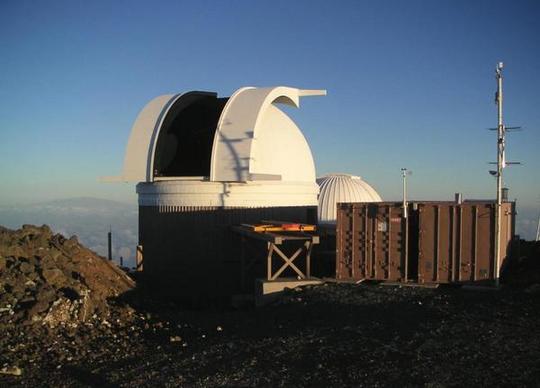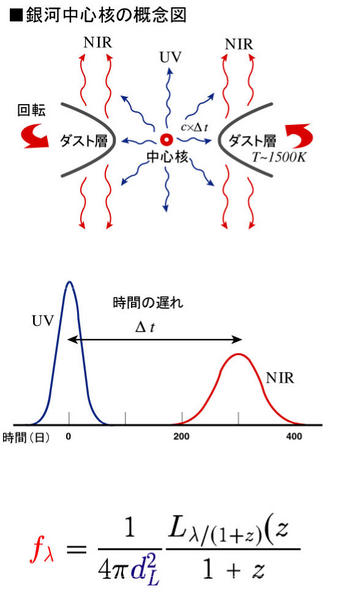of Active Galactic Nuclei

Accurate measurement of a quasar's luminosity and distance
The Multicolor Active Galactic NUclei Monitoring (MAGNUM) Project carries out long-term monitoring of quasars and supernovae in optical and near-infrared wavebands. From this monitoring, luminosity distances are derived and compared with those predicted from the redshifts of the objects. The results from these comparisons enable us to understand the fate of the Universe. The MAGNUM Project explores a new and unique method to measure the luminosity of quasars and active galactic nuclei by using their variability. An AGN is surrounded by a dust torus. The separation between the nucleus and the dust torus is controlled by the luminosity of the nucleus. Using monitoring observations which span a long time period, the MAGNUM Project measures the delay time between the ultraviolet-optical flux variation (from the nucleus) and the near-infrared flux variation (from the dust torus). This delay provides a measure of the absolute luminosity of the nucleus. The comparison of this absolute luminosity with the observed brightness of the nucleus yields its luminosity distance.
A fully automated observatory at the best site
For long-term multicolor monitoring observations, the MAGNUM Project placed a 2m telescope at the Haleakala High Altitude Observatory Site on the Island of Maui, one of the Hawaiian Islands. First light was obtained on the 21st of August, 2000. The seeing at the Haleakala Observatory equals that on Mauna Kea, which is recognized to be one of the best sites for ground-based observations. Moreover, the MAGNUM observatory aims to be operated fully automatically in order to increase the observing efficiency for long-term monitoring observations. The target scheduling system, the weather and cloud monitoring system, and other equipment at the observatory were designed to facilitate automatic observations.





